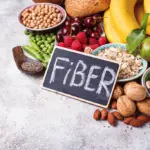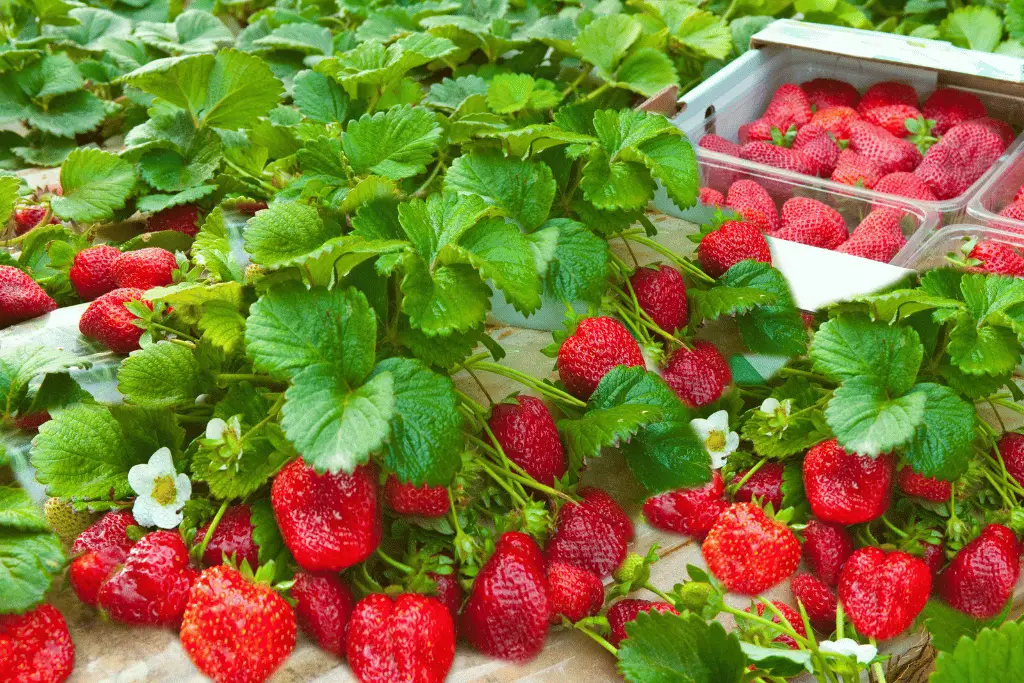
Greetings, green-thumbed friends and berry enthusiasts! Today, we embark on a horticultural adventure that takes us into the heart of every gardener’s sweet haven – the world of strawberry transplantation. If you’ve ever dreamt of plucking sun-kissed strawberries from your garden, then you’re in the right place.
Picture this: vibrant red berries, bursting with flavor, nestled in a patch of green goodness. Now, imagine being the mastermind behind this delicious spectacle. Transplanting strawberries isn’t just a task; it’s a journey that involves understanding the rhythm of these berry-bearing plants, decoding their signals, and providing them with a stage to shine.
In this garden tale, we’ll unravel the mysteries of when, why, and how to transplant strawberries. From the first signs that your strawberries are itching for a change to the applause-worthy finale of a successful transplantation, we’ll cover it all. So, grab your gardening gloves, sharpen those pruners, and let’s dive into the delightful world of strawberry transplantation. It’s time to cultivate not just plants but a symphony of flavors in your own backyard.
Understanding the Strawberry Plant
Before we dive into the nitty-gritty of transplanting strawberries, let’s get to know our green companions a bit better. Imagine this: a thriving strawberry plant with its luscious red fruits, but like any superstar, it has its life cycle. Understanding this cycle is key to knowing when our plant buddies might need a change of scenery.
Strawberry plants, like us, go through stages in life. They sprout, flower, and bear fruit. But as they grow, they may start feeling a bit cramped in their current home. That’s when we, the plant enthusiasts, need to step in and help them find a new place to call home.
Signs Your Strawberries Need Transplanting
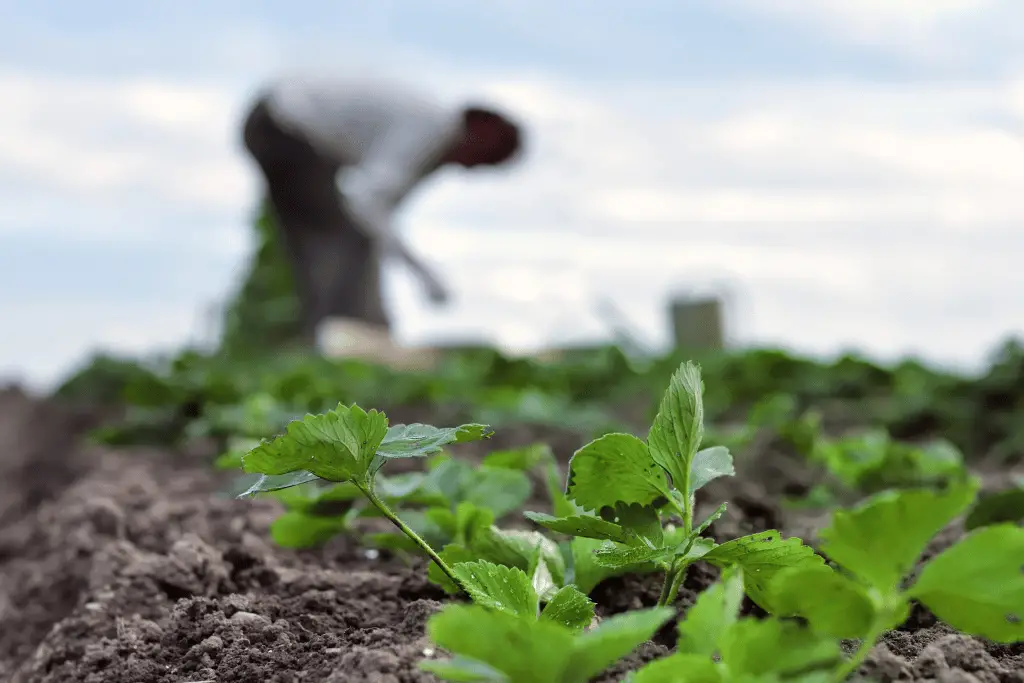
Now, how do we know when our strawberry friends are ready for a change? Well, they have their ways of dropping hints. Imagine your strawberry patch as a bustling neighborhood. If the plants start getting too cozy, you might notice signs of overcrowding. The once abundant fruit production might start to dwindle, and your plants could look a bit stressed out.
Keep an eye out for these visual cues — they’re like the plant’s way of saying, “Hey, I need a little more space to spread my roots and show off my berry-producing magic!” So, in this section, we’ll decode these signals and become the Sherlock Holmes of the gardening world, ready to solve the mystery of when our strawberries are crying out for a change of address. Ready, Watson? Let’s get sleuthing!
Best Season for Transplanting Strawberries

Now that we’ve got our detective hats on and can spot the signs, let’s talk timing. When is the strawberry plant’s version of “I’m ready for a new adventure”? Well, it turns out, there are two main seasons that stand out like stars on the gardening calendar.
1. Spring Transplantation: A Bloomin’ Good Time!
Ah, spring—the season of new beginnings, chirping birds, and, you guessed it, strawberry transplanting. Imagine your garden waking up from its winter nap, and your strawberries are stretching, ready to put on a show. Spring is like the grand opening for a new chapter in your strawberry plant’s life.
The soil starts to warm up, and the weather becomes a bit friendlier. These conditions create the perfect stage for our green performers to shine. We’re talking about happy roots, smiling leaves, and the promise of sweet berries down the road.
But hold on, because there’s another contender in the ring.
2. Fall Transplantation: A Cozy Move Before Winter Snuggles In
As the days get shorter and the air gets crisper, fall whispers in our ears about change. Believe it or not, autumn is also a fantastic time to give your strawberries a change of scenery. Why? Well, the cooler temperatures make for less stress on both the plants and the gardener.
Plus, transplanting in the fall gives your strawberries a head start. They can quietly settle into their new digs during the winter slumber and wake up all refreshed and ready to dazzle in the spring. It’s like tucking them into a cozy bed before the chilly winter nights kick in.
So, whether you’re a spring enthusiast or a fall aficionado, both seasons offer their own magic for strawberry transplantation. It’s like choosing between a bloomin’ garden or a cozy, pre-winter relocation. You get to be the director of your strawberry plant’s blockbuster — action in the spring, or drama in the fall? The choice is yours!
Preparing Strawberries for Transplantation
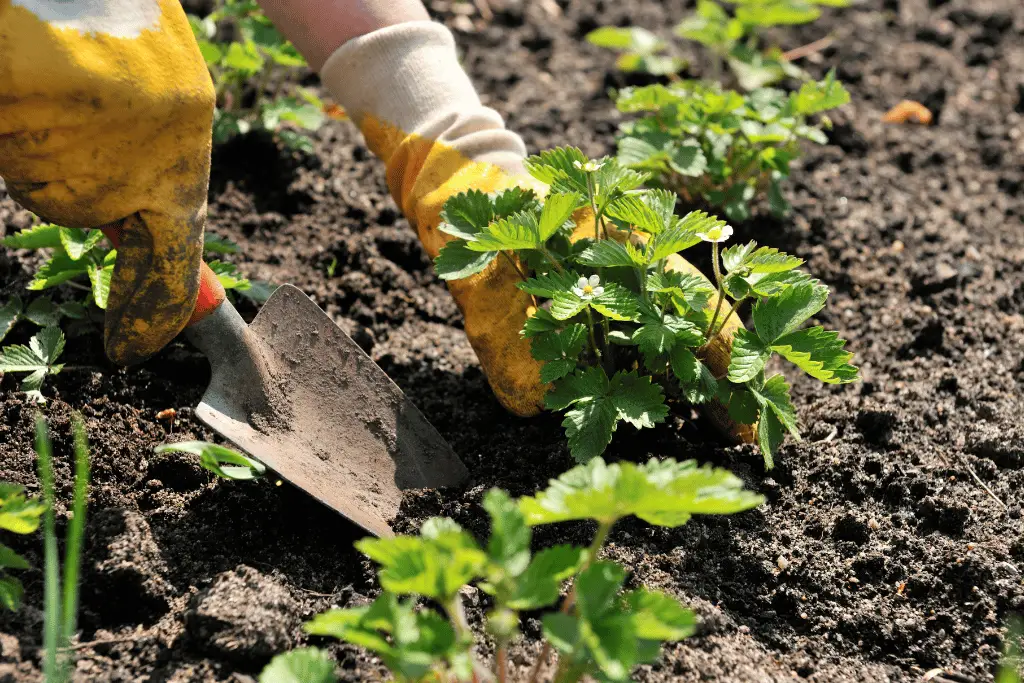
Alright, so we’ve picked our season, and it’s time to get down and dirty—literally! Before we start digging up our strawberry buddies, we need to get the stage set. Think of it like preparing for a big move; you wouldn’t want to just grab your stuff and go, right?
The Planting Ground Ballet
First things first, prep the stage. Choose a well-drained, nutrient-rich soil. Strawberries like their space but also appreciate a comfy, nutrient-packed bed. Break up the soil, toss in some compost or well-rotted manure – it’s like laying out the red carpet for your soon-to-be-transplanted stars.
Watering Rituals
Hydration is key, my friends! Give your strawberries a good drink a day or two before the grand relocation. Moist soil makes for happy roots, and happy roots mean a smoother transition. It’s like giving them a farewell sip from their old watering hole.
Trim and Tidy
Time for a little grooming session. Trim back those excess leaves and runners. It’s not about giving them a drastic haircut; think of it as a spa day. We’re aiming for less stress during the move, and a bit of pruning helps your plants focus on settling into their new home.
Step-by-Step Guide to Transplanting Strawberries

Alright, the stage is set, and our strawberries are prepped for their grand exit and entrance. Let’s get into the nitty-gritty of the transplanting process, step by step.
Step 1: The Digging Dance
Grab your trusty shovel, and let the digging commence! Gently unearth your strawberries, making sure to get a good amount of soil around the roots. It’s like scooping up a delicate treasure. Be patient and handle those roots with care.
Step 2: Rehearsing the Replant
Now, find the perfect spot for your strawberries in their new home. Give them some space – they’re not fans of crowded living. Dig a hole, settle them in, and pat the soil around them like you’re tucking them into bed.
Step 3: Watering Welcomes
Post-transplant hydration is crucial. Shower your strawberries with water to help them settle in. It’s like giving them a warm welcome, saying, “You’re home now, enjoy the view!”
Common Mistakes to Avoid
Hey fellow garden enthusiasts, let’s talk about the pitfalls. We’re all human, and sometimes, our green intentions can hit a few bumps. Here are some common slip-ups to steer clear of when you’re in the business of transplanting strawberries:
- Rough Handling Treat your strawberries like fragile treasures, not like you’re in a rush to catch a train. Rough handling can damage those tender roots and leave your plants feeling a bit bruised. Be gentle, and they’ll thank you with juicy berries later.
- Ignoring the Signs Remember those signs we talked about earlier? Ignoring them is like turning a blind eye to a GPS while driving. If your strawberries are telling you they need a change, listen up! Transplanting at the right time makes the whole process smoother.
- Poor Post-Transplant Pampering Once the relocation show is over, the after-party matters. Don’t neglect your plants! Proper watering, a bit of shade if it’s scorching, and some encouraging words (optional) go a long way. Think of it as the cool-down after a workout – your strawberries deserve a little pampering too.
Post-Transplant Care
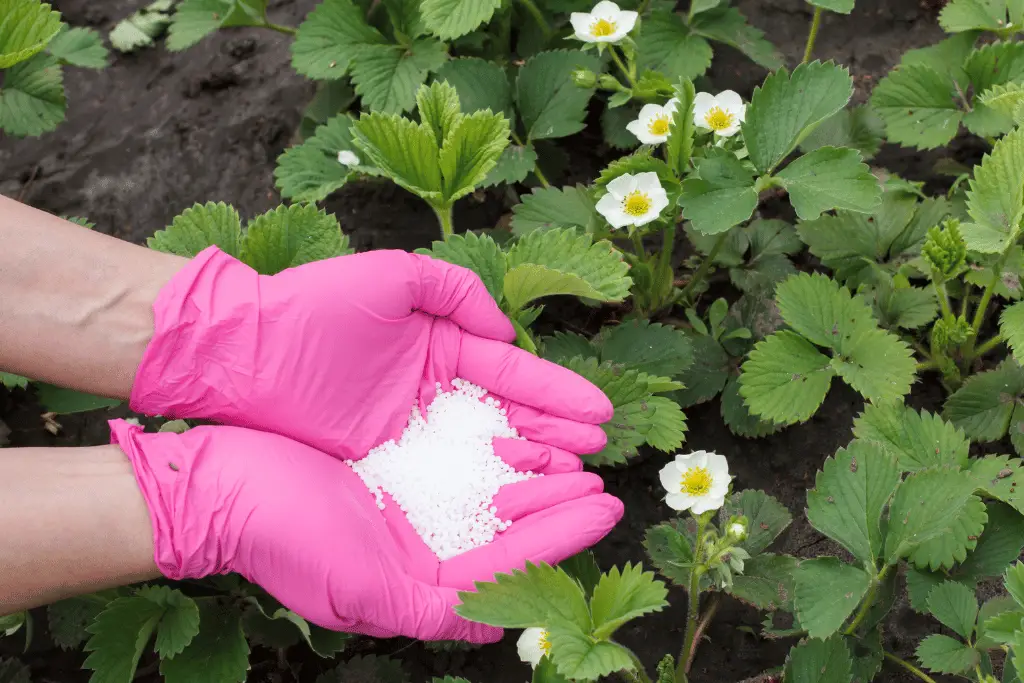
Now that the stage lights are dimming, and your strawberries are settling into their new roles, let’s talk post-transplant care. It’s not just about waving goodbye and hoping for the best; there’s a bit of ongoing TLC involved.
Water, Water, Water! Hydration is the name of the game. Keep that soil consistently moist, not drenched. It’s like maintaining the right humidity for your houseplants – strawberries have a sweet tooth for just-right moisture levels.
Feeding Time A well-fed strawberry is a happy strawberry. Consider a balanced fertilizer to keep those leaves lush and the fruits sweet. Think of it as serving a gourmet meal to your favorite performers after a spectacular show.
Health Check-ups Regularly peek in on your transplanted strawberries. Check for any signs of stress, pests, or diseases. It’s like being the backstage manager, making sure everything runs smoothly. Early detection means you can nip potential issues in the bud (pun intended).
So there you have it, the 411 on what to avoid and how to keep the post-transplant party going. Treat your strawberries right, and they’ll reward you with a berrylicious performance!
Varieties and Their Transplantation Needs
Hey gardening pals, let’s dive into the fascinating world of strawberry varieties. Just like different actors in a movie have unique needs, so do strawberry varieties. Knowing the specifics for your chosen cast can make all the difference in their transplanting success.
Sweethearts and Their Preferences
Strawberries come in all shapes, sizes, and flavors. Some are June-bearing, eager to shine in late spring, while others are everbearing, ready for a curtain call all season long. Consider your variety’s preferences – do they prefer the spring spotlight or the cozy embrace of fall? Tailoring your transplant plans to their schedule is like giving them a customized script.
Alpine Stars: A Different Beat
Now, alpine strawberries – they dance to a different beat. These petite powerhouses often prefer a late summer or early fall transplant. It’s like giving them a chance to strut their stuff when the garden isn’t as crowded, and attention can be lavished on their unique charm.
Understanding the quirks of your strawberry varieties ensures you’re not just a gardener but a director who knows how to bring out the best in each actor.

Applause for a Successful Transplantation
And now, dear gardening enthusiasts, we’ve reached the final scene of our strawberry transplantation saga. Let’s take a moment to applaud the efforts you’ve put into understanding when, why, and how to transplant these delightful berry-bearing artists.
By tuning into the needs of your strawberry plants, avoiding common pitfalls, and giving them the care they deserve, you’ve orchestrated a gardening masterpiece. Whether your strawberries are flourishing in the spring sun or cozying up for a fall encore, you’ve played a crucial role in their success.
As you step back and admire your thriving strawberry patch, remember that every gardener plays a part in the beautiful cycle of growth. May your strawberries be sweet, your harvests bountiful, and your gardening adventures filled with joy. Until next time, happy gardening!

